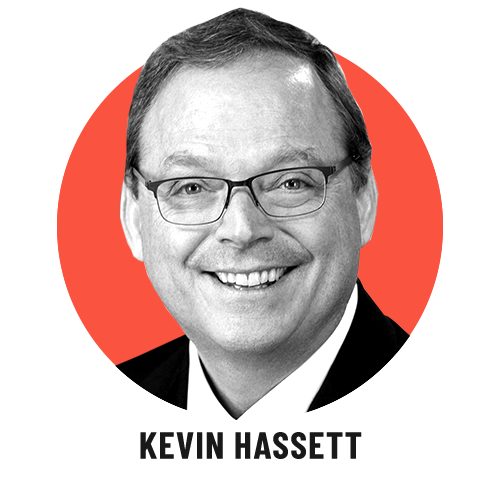Many of the same analysts now say we are headed for recession. There is, if nothing else, logical consistency in their position since they didn't believe Trump's economic plan would work in the first place.
To evaluate the odds of recession, however, it is essential to review the policy record's effects, which we should expect to continue. It's not surprising that policy pessimists are worried about a recession given their views of the impact of the president's policies. But their pessimism is misplaced given the evidence.
Indeed, for the most part, things are working exactly as planned.
Start with deregulation. President Trump revolutionized regulatory practice when he came into office, giving agencies a regulatory budget. If they wanted to increase regulatory costs with a new regulation, they had to find something else to cut. And the successes have been impressive. For example, the 2017 Drug Competition Action Plan and subsequent reforms have led the Food and Drug Administration to approve dramatically more generic drugs, which has increased competition and helped push prices for prescription drugs 1.2% lower during the 12 months through February 2019.
In June, my last month as the chairman of the President's Council of Economic Advisers, we published a detailed study of this and other deregulatory changes. We documented that reforms already enacted will raise real incomes by $3,100 per household over the next decade. Since deregulation continues, it is likely that the final benefit of this pillar of the administration's economic policy will be much larger. Momentum, indeed.
As for corporate tax reform, the White House used economic models that predicted they would spur significant growth. Firms would build new factories, hire more workers and bid up wages.
Each of these effects happened as expected. While capital spending growth has slowed, the level of investment jumped after the tax cuts and stayed high. That has pushed up the growth in the amount of capital per worker, which has driven up productivity and wages. The bottom line for workers has, if anything, improved faster than the administration's forecasts constructed during the tax debate. Since the tax cuts were passed, the typical household (of 2.5 people) has seen a $5,205 increase in real disposable personal income, according to calculations by the White House's Council of Economic Advisers.
The administration came into office with a mandate to reform America's trade deals to benefit our workers and our businesses. The status quo on trade left much room for improvement as President Trump took office. The president has already partially delivered on this promise. There is an improved U.S.-Korea Trade Agreement (KORUS) and an improved deal with our neighbors to the North and the South now in the hands of Congress. What is left is a major dispute with China, a dispute that seemed close to resolution in the spring, but now seems less so.
It may well be that the near-term costs of the dispute with China are a significant risk to the outlook, but the upside of successful reform is large as well. The rewards justify the risks. China's theft of US intellectual property alone imposes, by some credible estimates, hundreds of billions of dollars in damage to the US economy per year. To put that in perspective, the largest property heist in US history was the approximately $500 million robbery of the Isabella Stewart Gardner Museum in Boston in 1990. When President Trump took office, China's average take per day was about that much — between $225 billion and $600 billion annually, or about $500 million each day.
A nice way to summarize the current state of the economy and quantify the positive impact of the president's policies is to compare the latest Congressional Budget Office economic outlook to the one it published in August of 2016. In 2016, the CBO thought that the unemployment rate for 2019 would be 4.8%.
It now thinks it will be 3.7%. The CBO thought that nearly 154 million Americans would have jobs this year; it now puts the number at 157 million — roughly 3 million jobs higher. It estimated in 2016 that nominal GDP this year would be $20.6 billion; it now places it at $21.4 billion, $800 million more GDP than expected.
To put the scale of these numbers in perspective, if a recession did arise, imposing job losses comparable to those that occurred in the 2001 recessions, American workers would still be better off than the CBO thought they would be looking ahead from 2016. The CBO, like other forecasters that underestimated the positive impact of recent policy changes, is calling for slowing growth in the future, but there is no reason to expect them to be more right in the future than they have been since 2016, assuming the president's policies stay in place.
The world economy is slowing sharply, and the demand for US exports is a major negative for the outlook compared to a year ago. But the positive momentum from ongoing deregulation and the continuing impact of the tax cuts provide an insurance policy against recession, and President Trump's policies have bought us that insurance policy.

No comments:
Post a Comment